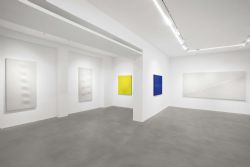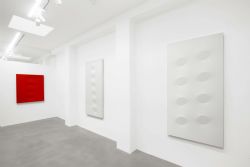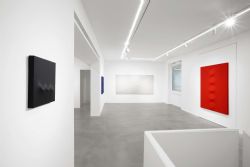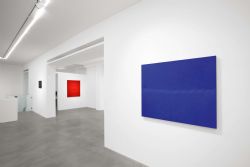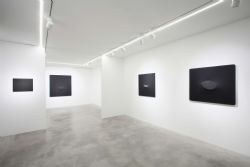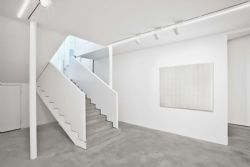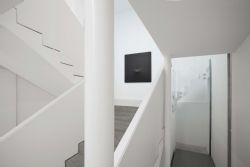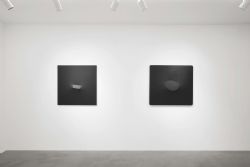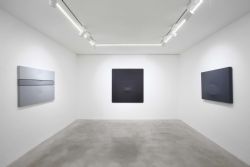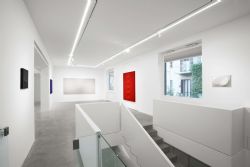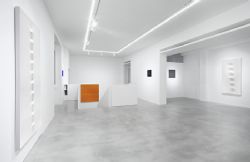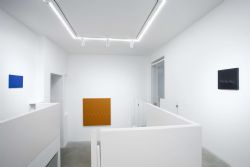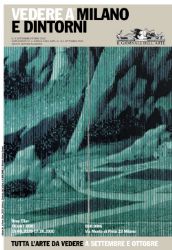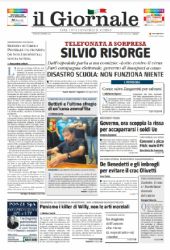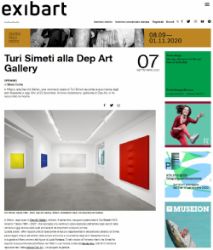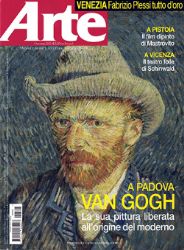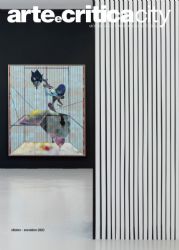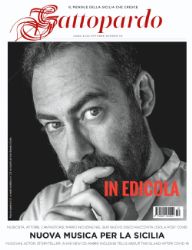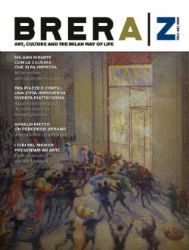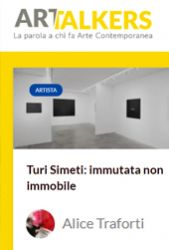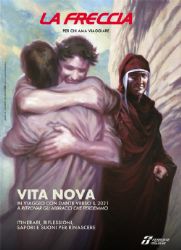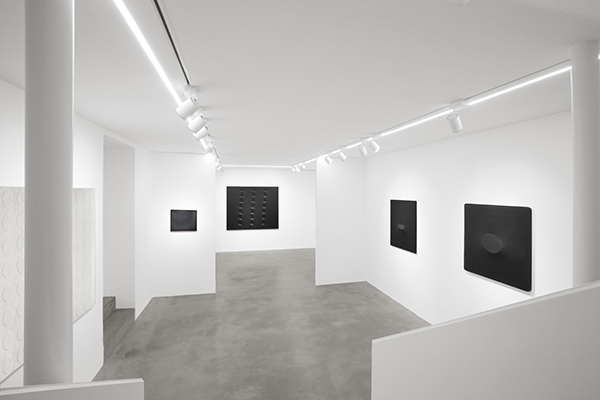
TURI SIMETI.
OPERE 1960 - 2020
a cura di Demetrio Paparoni
Milano, Dep Art Gallery
8 settembre – 22 dicembre 2020
In concomitanza con l’Art Week milanese, Dep Art Gallery inaugura l’8 settembre la mostra “Turi Simeti. Opere 1960 – 2020”.
La mostra, fino al 22 dicembre, celebra non solo i sessant’anni di carriera dell'artista, ma anche la collaborazione con la galleria milanese che la ospita, con la quale Simeti intrattiene da diversi anni un rapporto di proficua collaborazione.
Circa 20 opere rappresentative della sua produzione, alcune delle quali provenienti da importanti collezioni private, realizzate dagli esordi della propria carriera a oggi. Questa scelta offre dunque l’opportunità di ripercorrere le fasi più rappresentative del percorso artistico di Simeti, personaggio chiave nell’ambito della pittura aniconica e volumetrica degli anni sessanta che si è sviluppata a Milano attorno alla figura di Lucio Fontana. È nello studio di Fontana infatti che Simeti ha esposto le sue prime tele estroflesse nel 1965 in una mostra curata da Nanda Vigo.
Curata da Demetrio Paparoni la mostra è accompagnata da un catalogo in italiano e inglese, comprensivo di apparati bio-bibliografici aggiornati e un testo del curatore, il quale scrive tra l’altro:
A partire da Composizione, del 1961,e da 96 ovali bianchi realizzati nel 1965, e con le successive declinazioni sia formali che cromatiche, Turi Simeti ha concepito il quadro come un oggetto autonomo che non illustra, non racconta, non raffigura. In quanto oggetti autonomi che si protendono nello spazio come altorilievi queste opere possono essere considerate tanto quadri quanto sculture. Possono essere entrambe le cose o né l’una né l’altra. Hanno tutti gli elementi che costituiscono un quadro – telaio, tela, colore – e nascono per essere appese a parete. Sono tuttavia anche scultorei perché, avendo corpo e volume, trascendono la bidimensionalità del quadro. Questa ambiguità è voluta e pone interrogativi sul linguaggio e sulla natura dell’arte. Non va dimenticato che il lavoro di Simeti, parallelamente a quello di Enrico Castellani, Agostino Bonalumi e Paolo Scheggi prende l’avvio agli inizi degli anni sessanta dietro la spinta teorica e formale dei buchi e dei tagli di Lucio Fontana. C’è già in questa visione il germe delle dinamiche di pensiero che porteranno alla cosiddetta pittura analitica e all’arte concettuale. [...] La sua opera è un oggetto sorretto da un’architettura interna, un vero e proprio corpo la cui superficie, la tela, altro non è che la pelle che lo ricopre. È dunque il metodo adottato per la sua costruzione a consentire all’opera di incarnare un significato che si esplicita tanto nella solidità della struttura portante, che non vediamo, che possiamo solo immaginare, quanto nella tensione della tela, tirata quanto necessario per raggiungere il limite massimo di estensione.
Per quanto sia comprensibile che Simeti ritenga che i suoi lavori, in quanto forme legate a un metodo, non siano soggette a interpretazioni, è tuttavia innegabile che non c’è lavoro d’arte che non trascenda le intenzioni del proprio autore, finendo per manifestare assai più di quanto questi abbia inteso dire. Nell’opera di Simeti, per esempio, si può ravvisare una narrazione che rimanda al rischio di andare oltre ciò che è consentito, un monito a evitare strappi irrimediabili. Lo stesso Simeti ha spiegato che la sua preoccupazione è quella di forzare al massimo l’elasticità della tela senza che questa si laceri. La frattura, quando avviene, non consente che la tela sia recuperata. Il suo metodo presuppone che tutto sia sotto controllo, dal progetto per il falegname che costruisce il telaio all’intervento dell’artista per far venire fuori i rilievi.
TURI SIMETI. WORKS 1960 - 2020
curated by Demetrio Paparoni
Milan, Dep Art Gallery
8 September – 22 December 2020
On the occasion of the Milan Art Week, Dep Art Gallery presents "Turi Simeti. Works 1960 - 2020", opening September 8 and running until December 22.
The exhibition brings together about twenty large-format works, some of which come from important private collections, created from the beginning of his career to the present day. This choice therefore offers the opportunity to retrace the most representative phases of Simeti's artistic career, a key figure in the field of aniconic and volumetric painting of the Sixties that developed in Milan around the figure of Lucio Fontana. It was in Fontana's studio that Simeti exhibited his first everted canvases in 1965 in an exhibition curated by Nanda Vigo. Since 2013 the artist is represented by Dep Art gallery.
Curated by Demetrio Paparoni, the exhibition is accompanied by a catalogue in Italian and English, including updated bio-bibliographical apparatus and a text by the curator, who writes among other things:
"Starting with the Black Ovals and White Ovals made in 1962, and with the subsequent declinations both formal and chromatic, Turi Simeti conceived the painting as an autonomous object that does not illustrate, does not recount, does not represent. As autonomous objects that protrude into space as high-reliefs, these works can be considered both paintings and sculptures. They can be either one or the other. They have all the elements that constitute a painting - frame, canvas, colour - and are created to be hung on the wall. However, they are also sculptural because, having body and volume, they transcend the two-dimensionality of the painting. This ambiguity is deliberate and raises questions about the language and nature of art. It should not be forgotten that Simeti's work, parallel to that of Enrico Castellani, Agostino Bonalumi and Paolo Scheggi, started at the beginning of the 1960's, following the theoretical and formal thrust of Lucio Fontana's holes and cuts. There is already in this vision the seed of the dynamics of thought that will lead to the so-called analytical painting and conceptual art. [...] His work is an object supported by an internal architecture, a real body whose surface, the canvas, is nothing but the skin that covers it. It is therefore the method adopted for its construction that allows the work to embody a meaning that is expressed both in the solidity of the supporting structure, which we cannot see, which we can only imagine, and in the tension of the canvas, stretched as much as necessary to reach the maximum limit of extension.
Although it is understandable that Simeti believes that his works, as forms related to a method, are not subject to interpretation, it is nevertheless undeniable that there is no work of art that does not transcend the intentions of its author, ending up manifesting much more than he intended. In Simeti's work, for example, one can see a narrative that refers to the risk of going beyond what is permitted, a warning to avoid irremediable tears. Simeti himself explained that his concern is to force the elasticity of the canvas as much as possible without it tearing. The fracture, when it happens, does not allow the canvas to be recovered. His method presupposes that everything is under control, from the project for the carpenter who builds the frame to the artist's intervention to bring out the reliefs".
